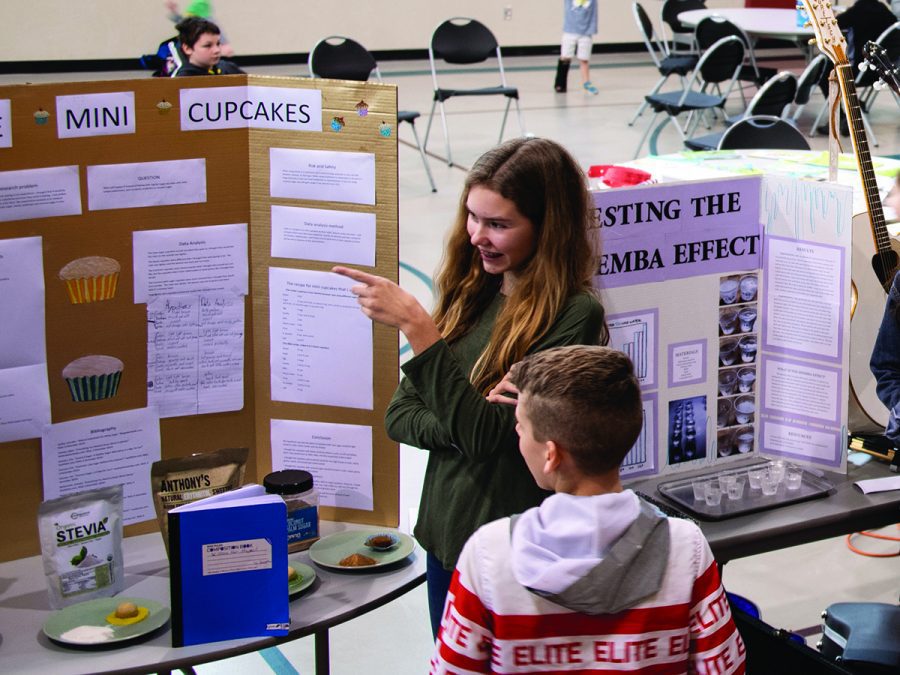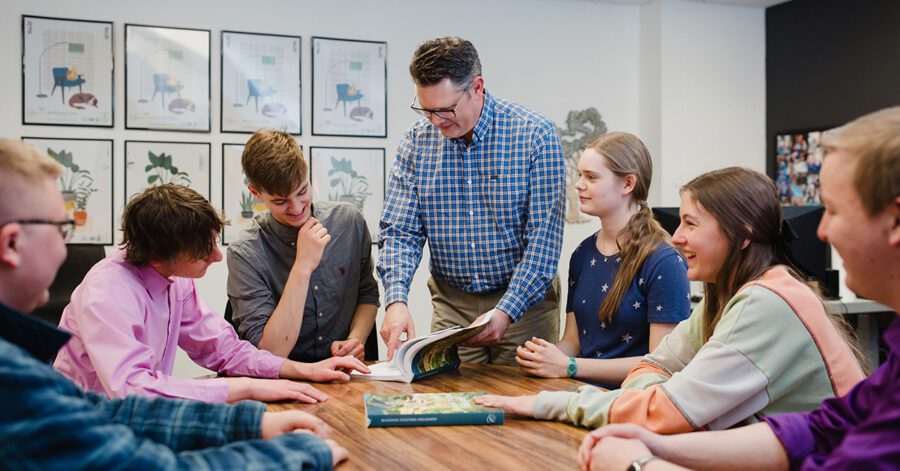Classical Conversations® Challenge A is the first of six levels that comprise our Challenge program. If you’re considering Challenge A for your homeschool student, here’s some information to help you get started.
An Overview of Classical Conversations Challenge A
In this general overview of Challenge A, we’ll cover the program’s corresponding student ages and grade level, theme, strands, and reading list.
Challenge A Student Ages and Grade Levels
Classical Conversations Challenge A is for students who are at least 12 years of age. To compare to the traditional school system, this means Challenge A generally aligns with the start of junior high, or 7th grade.
The Challenge A Theme
The theme of Challenge A is attention leads to ownership. In the earlier Foundations and Essentials programs, students’ learning is more parent-directed. However, Challenge A encourages students to slowly assume more control over their education and to become self-motivated learners.
This ownership of education develops as students practice attending — one of the Five Core Habits of Grammar. As they follow their Challenge A guide, complete assignments, and discuss what they’re learning with their peers in community, students practice observing the details, looking and listening closely.
The Challenge A Strands
All six levels of the Challenge program cover the same six classical strands (or skills) that students practice through studying subjects such as math, science, and literature.
The Challenge strands are logic, grammar, research, exposition, debate, and reasoning. Each Challenge community day is composed of six seminars (student discussions facilitated by Directors) in which students can practice each of these skills.
Logic
In Challenge A, the logic strand develops students’ logical thinking skills. Here, students learn to attend closely to how math problems are solved and compare examples of the same kinds of problems to find patterns. In the logic seminar on community day, Challenge A students consider how to solve math problems.
Grammar
In the grammar strand, Challenge A students focus on studying Latin. While Latin can be unfamiliar to many new Classical Conversations families, one of the many benefits of learning Latin is that students come to understand the English language better. In Challenge A, students compare similarities and differences between Latin and English, focusing primarily on nouns.
Since many parents are also unfamiliar with Latin, Challenge A students have a unique opportunity to take ownership of their Latin studies. While studying Latin in Challenge A, both parents and students should be willing to learn in small chunks and be patient with one another and themselves.
Research
Challenge A students study the natural world in the research strand. As they learn about biology and astronomy, Challenge A students begin to develop the research skills of asking good questions about the nature of things, seeking answers, and recording their findings. Throughout the research strand, students are encouraged to notice both the details and zoom out to observe the big picture.
In the second semester, Challenge A students also participate in Science Fair as part of their work in the research strand. Science Fair is a unique opportunity for students to apply the scientific method in a creative, hands-on approach. For this project, students can choose, plan, and perform an experiment; write a research paper; and present their findings to their community.
Exposition
In the Challenge A exposition strand, students practice composing and defending their thoughts by writing persuasive papers and having discussions with peers. With a focus on the Five Common Topics of Dialectic, students begin to explore truth, goodness, and beauty by reading Newbery Award-winning literature. In the exposition seminar in community, they read aloud their papers and learn to consider both sides of an issue in conversation with their peers.
Debate
Students learn cartography in the Challenge A debate strand. Since physical boundaries often represent political and religious boundaries, students learn where nations, states, and cities are to have productive conversations about the ideological differences and conflicts between these territories. In this strand, students memorize up to 150 geographical terms and practice drawing a world map from memory.
Reasoning
Finally, in the reasoning strand, Challenge A students come together in community to learn how to seek truth and disagree with one another in a Christ-like manner. Specifically, Challenge A students study analogies and figures of speech in the first semester and logical fallacies in the second semester. This strand intentionally involves shorter readings and fewer assignments, emphasizing the in-person community discussions.
The Challenge A Book List
The Classical Conversations Challenge A reading list is full of resources to encourage your student to start taking ownership of their education. To view the Challenge A book list, visit our bookstore.
How to Enroll Your Student in Challenge A
Whether your student has finished three cycles of Foundations and Essentials or is entering their first Classical Conversations program at Challenge A, in this Challenge level they’ll begin to develop strong critical thinking, communication, and study skills as they start to take ownership of their education.
To learn more about or to enroll your student in the Classical Conversations Challenge A program, click here.




